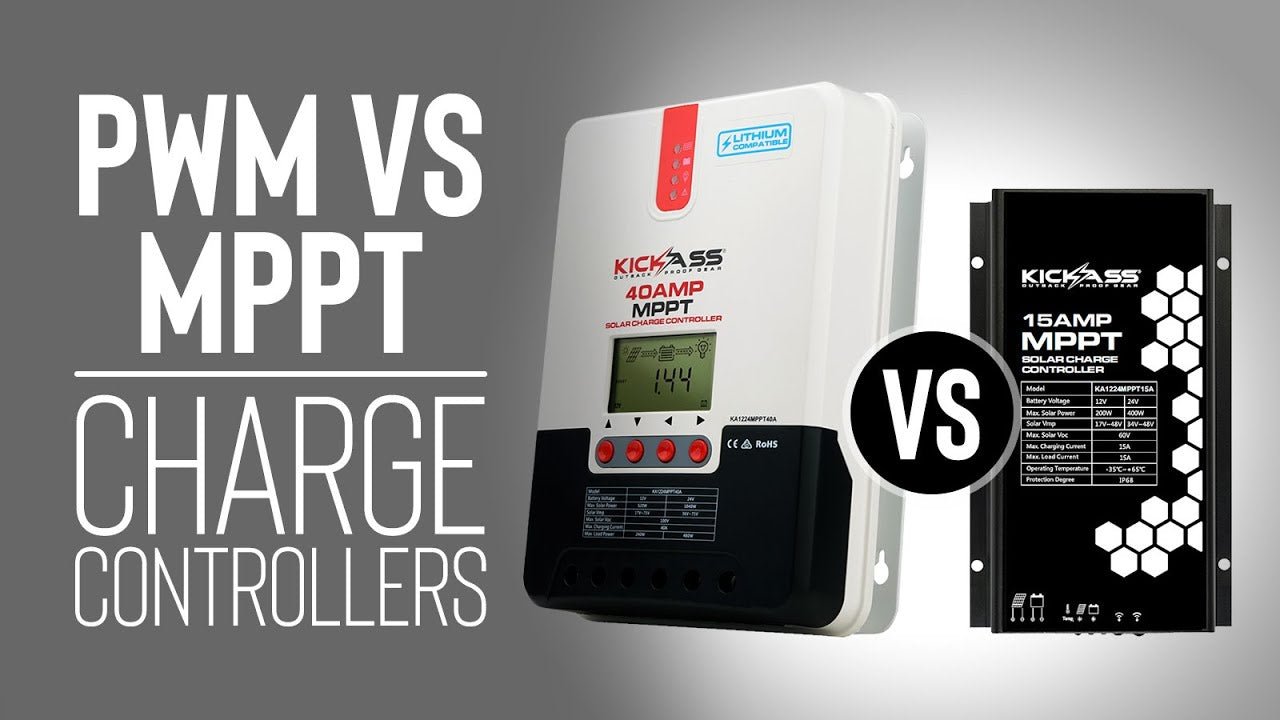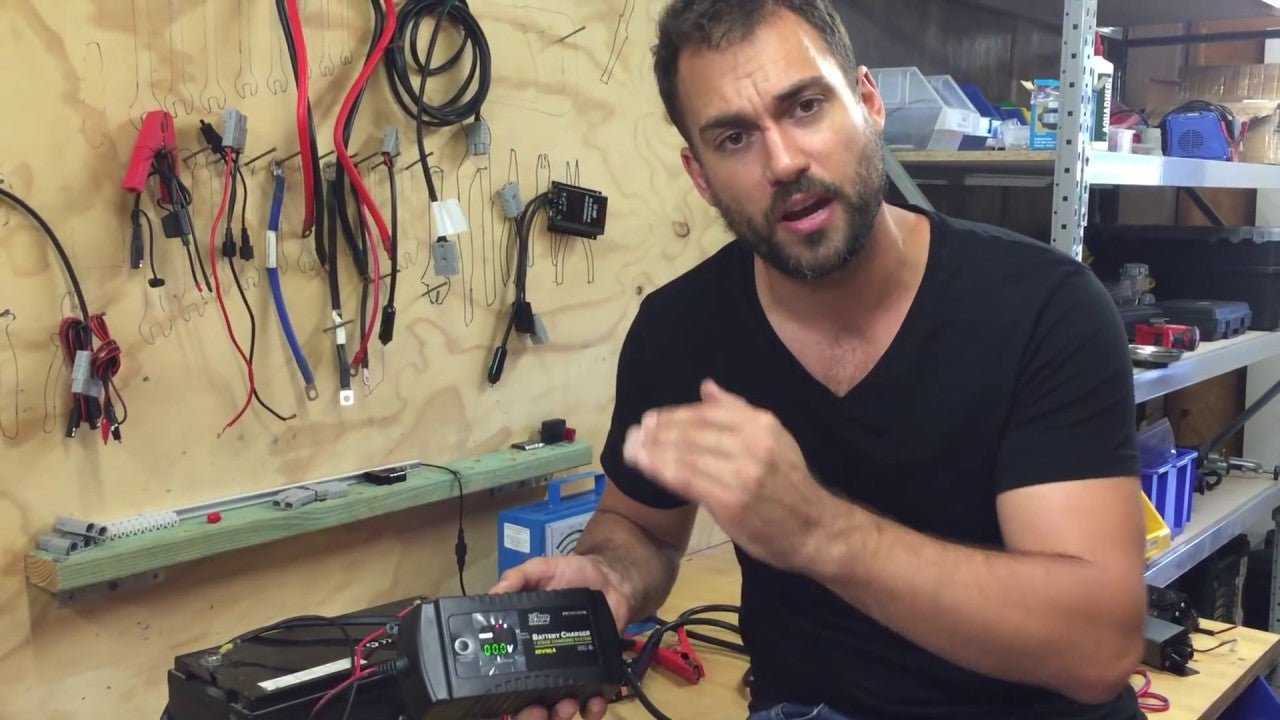Welcome to the KickAss guide on PWM (Pulse Width Modulation) versus MPPT (Maximum Power Point Tracking) charge controllers. This post aims to demystify the differences between these two types of charge controllers and help you decide which is best for your solar system.
A Quick Primer on Power Calculations
Solar panels are rated based on their output when connected to a load. For example, a 300-watt, 24-volt nominal panel might have an actual output of 36.1 volts (Vmp) and 8.3 amps (Imp), giving it a rating of approximately 300 watts. You'll find these specifications on the solar module's back or its datasheet.
The Role of Charge Controllers
Charge controllers are vital in battery-based solar systems, managing the charging process to prevent battery overcharging. They also ensure that current flows only into the batteries, not out, especially critical at night when the solar array's voltage might drop below the battery bank's.
PWM vs. MPPT Charge Controllers
Though they look similar, PWM and MPPT charge controllers operate differently. PWM controllers create a direct connection between the solar array and the battery bank, pulling down the array's output voltage to match the battery's. As the battery charges, its voltage—and therefore the solar panel's voltage—rises, using more of the solar power.
In contrast, MPPT charge controllers measure the solar panel's VMP voltage and down-convert the PV voltage to match the battery bank. This conversion raises the current, utilizing more available power from the panel.
The Impact on Your System
Using a 100-watt, 12-volt nominal panel and a 12-volt battery bank as an example, a PWM controller would result in a lower wattage output when the battery's voltage is low, improving as the battery charges. An MPPT controller, however, consistently maximizes the power output, increasing the efficiency of power transfer from the panel to the battery.
When to Use Which
- PWM Controllers: Ideal for smaller systems where the solar panel's nominal voltage matches the battery bank's. They work well when the cost difference between upgrading your solar panel size is less than the jump to an MPPT controller.
- MPPT Controllers: Best for larger systems or when the solar array's voltage doesn't match the battery bank. They're particularly beneficial if adding more panels is more expensive than upgrading to an MPPT controller. MPPTs are also essential when you need to minimize the physical size of your solar array but want to maximize power output.
Choosing the right charge controller depends on your system's size, the compatibility of panel and battery voltages, and your budget. PWM controllers offer a cost-effective solution for smaller, matched-voltage systems. In contrast, MPPT controllers unlock greater efficiency and flexibility, especially for larger arrays or mismatched voltages.








Leave a comment
All comments are moderated before being published.
This site is protected by reCAPTCHA and the Google Privacy Policy and Terms of Service apply.